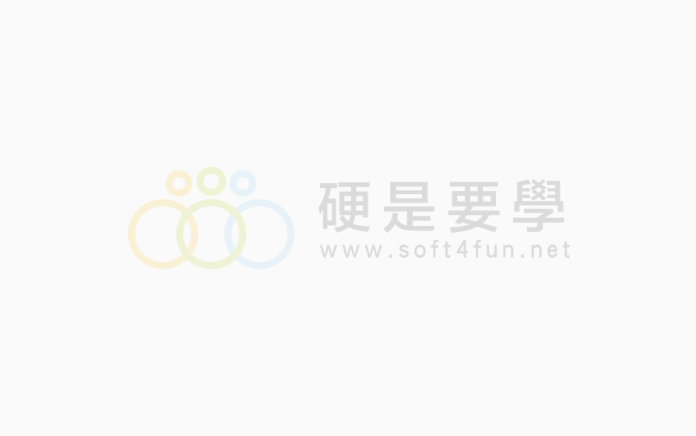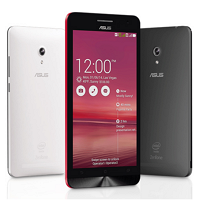You might think that ASUS launching a new phone is not big deal. But if we say that the new ASUS ZenFone offers a premium phone experience at the bargain price of a Xiaomi phone, you might be more interested.
Unlike the transformer models of the past, this year ASUS is launching a new range of mobile phones, named “ZenFone” The use of the word “Zen” reflects the minimalist design of the ZenFone. Furthermore, unlike the high-end smartphones produced by other major brands, the ZenFone is offered at a fantastic price.
After playing with the phone for a few days, we feel that the ZenFone offers three outstanding selling points: the ZenUI user interface, PixelMaster low-light photography, and most importantly, the phone’s great price. What exactly is so outstanding about this phone? Let’s find out!
ASUS ZenFone 6 Basic Specifications
Processor: Intel® Atom™ Z2580 (2.0 GHz)
Memory: 2G Internal Storage: 8G (expandable with memory card)
Network: 802.11 b/g/n + Dual SIM
Screen: 6 inch HD quality IPS display
Battery: 3300 mAh (takes about 3 hours to be fully charged from zero)
Camera: 13 million pixels (rear camera, supports PixelMaster technology); 2 million pixels (front camera)
Android version: Android version3 (upgradeable to Android 4.4) + ZenUI.
Unboxing the ZenFone 6
Let’s look at the outside packaging of the ZenFone 6!
The ZenFone 6 packaging and design continues with the Zen style, and eschews fancy design and excessive packaging. The phone name and a picture of the phone are displayed on the front of the package, while the side of the packaging lists some basis specifications such Bluetooth 4.0, the 3300mAh battery, and the 13 million pixel PixelMaster camera.
The ZenFone 6 Unveiled! From the front it looks very simple, with a low-key-design. Aside from the ASUS logo, everything is designed with simplicity in mind.
The phone has a metal trim at its base, and a hairline spun metal finish with concentric circles. These features are a continuation of the design principles of the ZenBook notebook range. However, personally I am not so keen on this design, because it tends to leave dust or dirt in the lines.
The top half of the body contains a 13 million pixel PixelMaster camera, which has good night shooting ability (we will introduce this later), while a video light can be found below the lens. At the bottom, you can find the Intel Inside and ZenFone logos together with a speaker grille. Although the speaker grille covers a large area, in fact the position of the speaker is on the left of the speaker grille.
The familiar volume and power buttons are on the right side of the phone. When camera mode is enabled, the volume button can be used as the shutter button (but to focus you still have to press the screen)
The screen uses anti-scratch and anti-fingerprint Corning Gorilla Glass 3.
The screen features a Super IPS display, with a near-180 degree viewing angle. Because of its 6-inch screen, even males might find it difficult to hold the phone in one hand, meaning both hands have to be used.
Removing the back, you can find the ZenFone’s dual card dual standby feature, which is great for those with more than one phone line. The SIM card slot uses a MicroSIM. If you have not replaced your SIM card, remember to ask for a new one at your mobile phone store!
ZenUI
ZenUI is a user interface develop especially for the ZenFone series by ASUS. However, in contrast to the past, ASUS spent a lot of effort on the ZenUI, with a stunning outcome.
On the ZenUI lock screen, you can find calendar and reminder information provided by What’s Next, making it an incredibly useful feature for users who keep busy schedules. The screen also displays the current time and weather information for the user’s location. Swiping the screen allows you to quickly activate the camera, dialing screen, or SMS.
The ZenUI is based on a minimalist style, and uses a pink color scheme, making it visually appealing. Swiping down from the top of the screen shows quick settings. ASUS has included a variety of commonly used settings here. Of course, users can change these settings buttons in accordance with their own preferences.
By tapping the icon in the upper right corner, you can view your current notifications. It is worth explaining that if there is any change in your schedule (such as a cancellation), this information will be displayed by What’s Next in the notifications. This function is very helpful for busy people. As long as your secretary keeps this information up to date, you can receive the latest reminders to your phone.
What’s Next a great scheduling app. Personally, I really like this feature! It can be used with the ZenFone “Activities” app or Google Calendar, and does not need any configuration, enabling information to be automatically obtained and schedule reminders to be set.
What’s Next reminders can be displayed in different places. In addition to the previously mentioned lock screen and notification bar, reminders can also be displayed on the desktop through a widget.
Because of its 6-inch screen, the ZenFone 6 can accommodate 4 x 5 icons on each home page, allowing users to place more widgets on the screen.
In order to avoid the desktop background making the home screen appear too cluttered, ZenUI offers a “clear layer,” which allows users to place a translucent layer on top of the original background.
Vivid presentation of weather information, including humidity, chance of rain, wind, and sunrise and sunset.
The power-saving feature includes two modes. If you want to make more personalized settings the power-saving feature also offers a range of customization features.
If you do not like the factory color settings, you can use Splendid to enhance screen colors or set the color temperature. Although the ZenFone screen displays full and accurate colors, if you have different color requirements, you can set them from here.
SuperNote allows you to make both typed and handwritten notes.
The ZenFone 6 offers an exclusive one-hand mode, with three different screen sizes: 4.3, 4.5, and 4.7. Users can select an appropriate one-hand mode according to whether they are right or left handed, making it suitable for girls with relatively small hands.
ZenUI provides many detailed design features. As we have limited space, we just pick out a few of the most interesting ones here. But in comparison to the relatively hard feeling that ASUS gave in the past, ZenUI offers a more intimate approach that can be summed up in one word: “stunning.”
Testing the Camera
The ZenFone 6 camera uses a 13 megapixel SONY BSI lens, combined with PixelMaster technology, significantly improving the effectiveness of night shooting. For the camera, we have picked out a few of the most important features. There are many other interesting features that you can try out in store!
The ZenFone 6 camera feature offers many shooting modes. The highlight is the low light mode. Let’s try it out!
For low-light shooting, PixelMaster technology ensures outstanding results, which even the UltraPixel HTC One (M7) cannot beat. However, the downside is that once low light shooting is enabled, the number of pixels drops to 3 million.
With pictures taken by the HTC One (M7), many details can no longer be identified (click image to see in full size)
With pictures taken by the ZenFone 6, more shadow details are retained.
In the camera section, we tested the ZenFone 6 the exposure adjustment function for night-time photography. Overall, the results were good. The exposure was not affected by partial areas of light or darkness. However, due to hardware limitations, when adjusting exposure sometimes the camera can get stuck, as can be seen in this video.
This is a film of fireflies taken with the ZenFone. What do you think of the result? Please take a look! (PS: some users reported that they couldn’t see any picture, please adjust the resolution to 720p HD to see the fireflies!)
In addition, ZenFone also offers a beauty shot mode, with four choices, including “cheek,” “big eyes,” “small face,” and “soft skin.” For ladies, a phone without “big eyes,” “small face,” and “soft skin” features might as well be thrown away (?) However, fortunately ZenFone offers these features, producing excellent “mobile phone plastic surgery” outcomes. However, in order to save everyone’s eyes, please do not upload your own photos!

